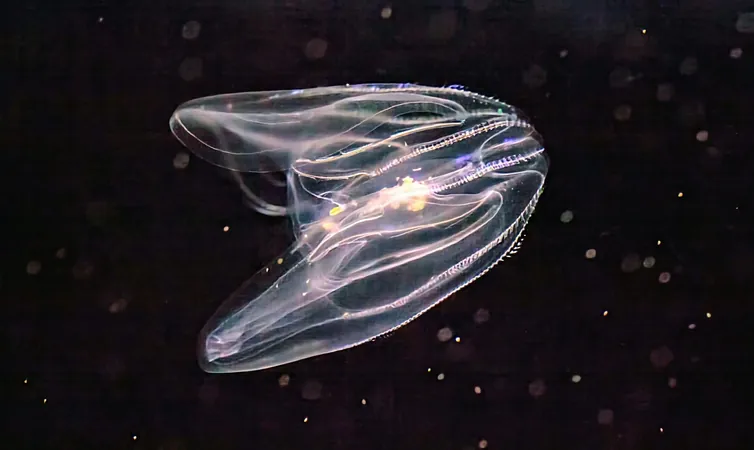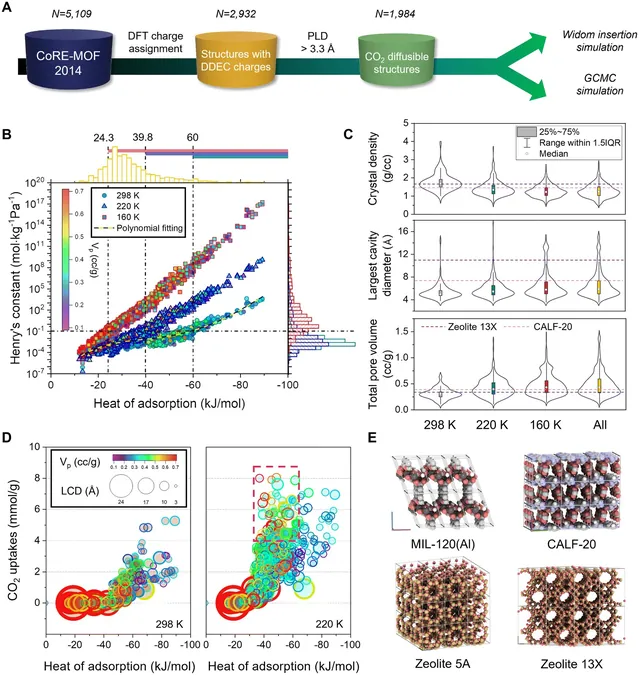
Scientists Unearth the Shockingly Revolutionary Ability of Comb Jellies to Age in Reverse!
2024-10-31
Author: John Tan
Scientists Unearth the Shockingly Revolutionary Ability of Comb Jellies to Age in Reverse!
In an astonishing breakthrough, a team of researchers from the University of Bergen has discovered that the comb jelly species Mnemiopsis leidyi possesses a remarkable ability to reverse its development from adult back to juvenile form. This incredible phenomenon appears to serve as a survival mechanism when faced with environmental stressors, shedding new light on the intricacies of developmental biology.
Traditionally, animal life cycles follow a predictable path: birth, growth, reproduction, and ultimately, death. However, the comb jelly now joins the elite ranks of organisms, such as the infamous "immortal jellyfish" (Turritopsis dohrnii), that defy this linear lifecycle and demonstrate extraordinary regenerative capabilities.
A Serendipitous Discovery That Shifts Our Understanding
The jaw-dropping discovery occurred during routine lab observations. Joan J. Soto-Angel, a postdoctoral fellow at the University of Bergen, initially observed an adult Mnemiopsis surprisingly morphing into a larval form. “This work challenges our understanding of early animal development and body plans,” Soto-Angel remarked. He was captivated by the sight of the jellyfish seemingly reverting to a more primitive, cydippid larval state as if traveling back in time.
Driven by curiosity, Soto-Angel and colleague Pawel Burkhardt, from the Michael Sars Center, conducted a series of controlled experiments to investigate whether this remarkable transformation could be replicated consistently.
A Strategic Survival Mechanism?
Under stressful conditions, such as starvation or injury, Mnemiopsis demonstrated a stunning ability to revert from its adult form back to a juvenile-like state. Over the course of several weeks, these specimens not only transformed physically but also adapted feeding behaviors typical of their larval stage. This capability significantly challenges scientists' previous understandings of developmental stages in early animal lineages.
The implications are far-reaching. Soto-Angel suggests that this newfound “time-travel” ability could indicate that reverse development might not be as rare as previously thought throughout the animal kingdom. Given that ctenophores are among the earliest diverging lineages of animals, this adaptability might represent an ancestral trait that has persisted through evolution.
Unraveling the Mysteries of Regeneration
This discovery opens up exciting avenues for future research. Burkhardt stressed the importance of uncovering the molecular mechanisms powering this reversal, especially regarding how the jelly's nerve net adapts during this intriguing transition. Insights gained here could hold pivotal information for neurobiology and regenerative medicine—fields striving to understand mechanisms of repair and regeneration in various organisms.
Moreover, the ability of Mnemiopsis leidyi to revert to an earlier life stage may highlight an evolved adaptive strategy. By returning to a juvenile form in times of stress, these organisms may conserve vital resources until conditions improve, ingeniously increasing their chances of survival.
A New Frontier in Developmental Biology
This groundbreaking research not only redefines our perceptions of animal life cycles but also reopens discussions about developmental plasticity—a concept that was previously thought limited to only a few species. The findings challenge the long-held belief that complex life cycles are irreparable, opening up fresh questions about the prevalence of such capabilities in other animal groups, possibly even more complex ones.
In essence, the transformation observed in Mnemiopsis leidyi has added a monumental piece to the evolutionary biology puzzle. It suggests that the potential for life's reversal and adaptability may be far more commonplace than once dreamed possible.
The implications of this research extend beyond comb jellies, as scientists venture into uncharted territories regarding aging, regeneration, and broader biological processes. These revelations could revolutionize how we approach understanding aging and cellular repair—a tantalizing promise for the future of biology!
Stay Updated!
For more captivating articles like this one, subscribe to our newsletter and dive into the complexities of the natural world.




 Brasil (PT)
Brasil (PT)
 Canada (EN)
Canada (EN)
 Chile (ES)
Chile (ES)
 Česko (CS)
Česko (CS)
 대한민국 (KO)
대한민국 (KO)
 España (ES)
España (ES)
 France (FR)
France (FR)
 Hong Kong (EN)
Hong Kong (EN)
 Italia (IT)
Italia (IT)
 日本 (JA)
日本 (JA)
 Magyarország (HU)
Magyarország (HU)
 Norge (NO)
Norge (NO)
 Polska (PL)
Polska (PL)
 Schweiz (DE)
Schweiz (DE)
 Singapore (EN)
Singapore (EN)
 Sverige (SV)
Sverige (SV)
 Suomi (FI)
Suomi (FI)
 Türkiye (TR)
Türkiye (TR)
 الإمارات العربية المتحدة (AR)
الإمارات العربية المتحدة (AR)